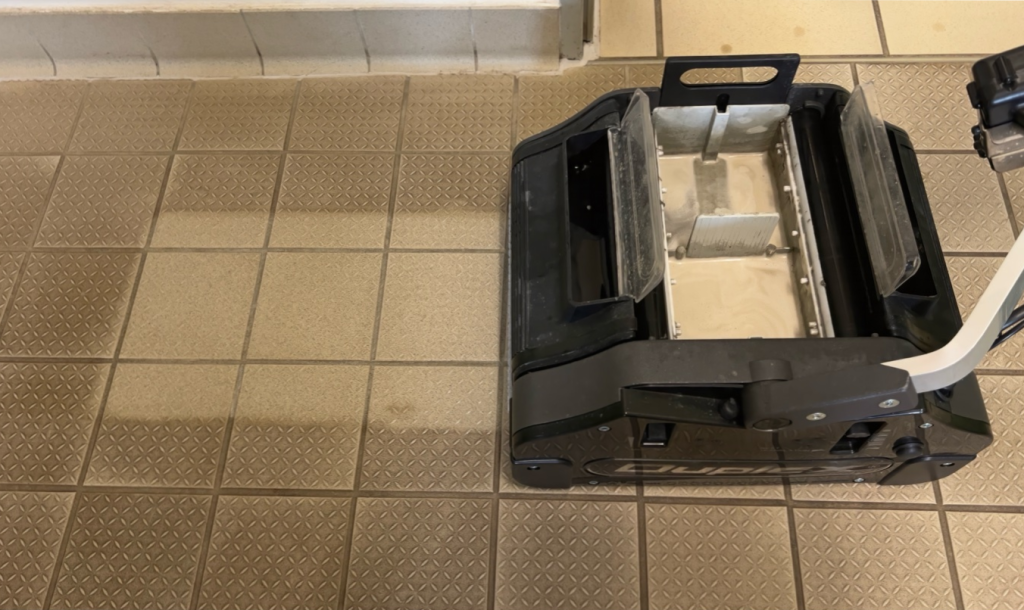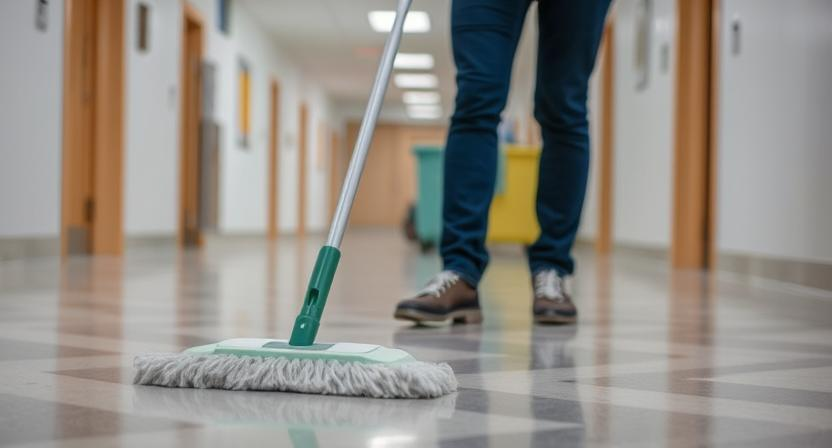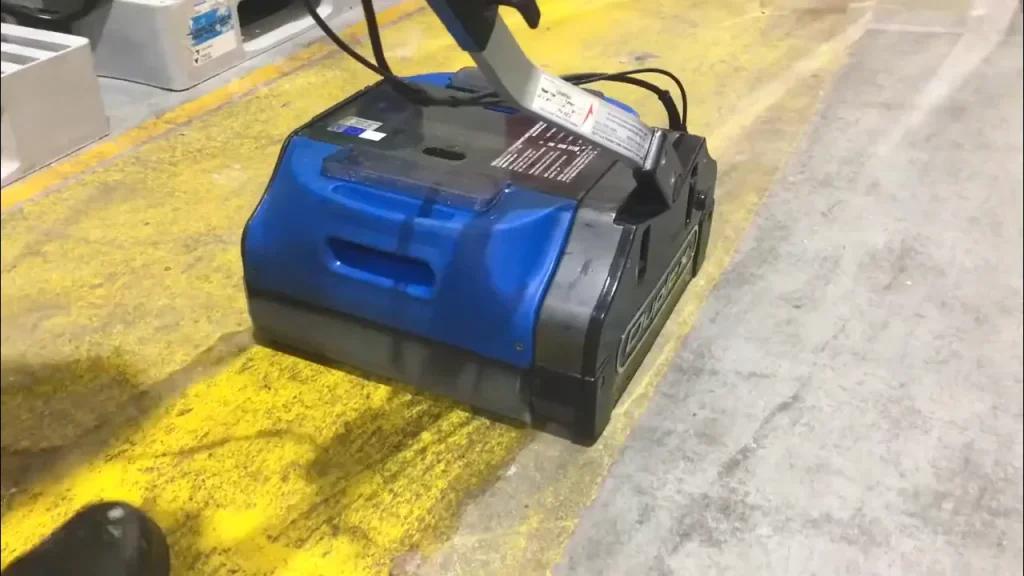Commercial floor scrubbers have become one of the most essential tools in modern facility maintenance. In places like retail stores, hospitals, warehouses and schools, expectations around hygiene and presentation are higher than ever. And yet, many teams still rely on mops and manual labour to manage thousands of square metres of flooring.
What’s changing is not just the technology — but how we think about cleaning as part of operations, safety and efficiency.
Let’s look at how commercial floor scrubbers are reshaping the cleaning process, making it faster, smarter and more sustainable for businesses of all sizes.
How Commercial Floor Scrubbers Actually Work

At a glance, a floor scrubber looks like a compact vehicle or trolley with a brush and tank underneath. But inside, the system combines mechanical scrubbing, controlled water flow and suction to deliver far more effective cleaning than any mop ever could.
Key Components at Work
| Component | Function |
|---|---|
| Rotating brush/pad | Agitates the surface to loosen dirt, dust and marks |
| Water tank | Sprays clean water (with or without detergent) onto the floor |
| Suction/vacuum | Extracts dirty water, leaving the surface dry and safe to walk on |
| Recovery tank | Collects used water separately to prevent cross-contamination |
Many modern machines also offer adjustable brush pressure, detergent metering and water-saving modes, allowing operators to clean different types of flooring efficiently from vinyl in clinics to concrete in warehouses.
Why More Businesses Are Making the Switch

One of the biggest advantages of commercial floor scrubbers is their ability to save time and reduce labour costs without compromising on cleaning quality.
Imagine a shopping centre that used to take two staff members three hours to mop manually each night. After switching to a ride-on scrubber, the same job takes one person just over an hour. This not only improves productivity but also frees up team capacity for other tasks.
More consistent results are another major benefit. Manual cleaning often leaves streaks or uneven coverage. Scrubbers deliver a uniform clean every time, especially when handling spills, oily residues or high-traffic entryways.
Comparing Traditional Cleaning and Scrubber Use


| Feature | Manual Mopping | Commercial Floor Scrubber |
|---|---|---|
| Cleaning time | Long, repetitive | Fast and efficient |
| Surface drying | Slow, may leave wet patches | Quick drying due to vacuum system |
| Labour demand | High | Lower, single-operator use |
| Cleaning consistency | Varies between staff | Uniform and repeatable |
Choosing the Right Machine for Your Facility
Selecting the right industrial floor scrubber depends on your layout, flooring type and frequency of cleaning.
- Walk-behind models work best in schools, clinics and restaurants where space is tighter.
- Ride-on scrubbers are ideal for large open areas such as supermarkets, carparks or factories.
- Compact units help in areas with lots of furniture or narrow aisles.
If you deal with multiple floor types, look for a machine that allows custom brush types or pressure settings. These adjustments protect delicate surfaces while ensuring a strong clean where needed.
Sustainable Cleaning Without Compromise
Sustainability is no longer optional. Scrubbers contribute by reducing both water usage and chemical dependency. Many models include:
- Precise detergent controls, preventing overuse
- Low-noise operation, making them suitable for hospitals or 24-hour facilities
These features help meet environmental targets while also reducing operating costs. A cleaner floor doesn’t have to come at the planet’s expense.
Keeping the Machine in Top Condition
Even the best equipment needs care. Regular maintenance helps prevent breakdowns and ensures your machine performs at its best.
After each use, it’s important to:
- Empty and rinse both clean and recovery tanks
- Remove and clean brushes or pads
- Wipe down the body to prevent dirt build-up
- Inspect squeegees and hoses weekly to check for wear
Following the manufacturer’s maintenance schedule also helps extend the life of your scrubber and keeps repair costs down.
Real Stories from the Field
1. Aged Care Centre in Sydney

The centre previously relied on manual cleaning, which took over two hours every evening. After investing in a compact walk-behind scrubber, their cleaning team now finishes the job in under 45 minutes. Residents noticed cleaner hallways and fewer odours, while staff appreciated the quieter operation and reduced fatigue.
2. National Retail Chain
Cleaning large tiled areas across multiple stores was a logistical challenge. By introducing ride-on scrubbers at each major location, the chain cut cleaning times by 50% and standardised cleaning quality across stores. The consistent floor appearance contributed to improved customer feedback.
3. Distribution Warehouse

A logistics company operating a 24/7 facility faced persistent dust problems. Their new commercial scrubber, equipped with a dust-control squeegee, not only cleaned more thoroughly but also improved air quality. This led to fewer respiratory complaints and better compliance with workplace health regulations.
A Smarter Way to Clean
The introduction of commercial floor scrubber technology is not just about upgrading equipment. It’s about shifting how cleaning is viewed within business operations — not as a cost, but as an investment in safety, efficiency and professionalism.
From faster cleaning and reduced water use to improved floor safety and better staff morale, the benefits are clear. Whether you’re managing a warehouse, retail centre or healthcare facility, choosing the right machine can make a noticeable difference every day.
Frequently Asked Questions
Can I use a commercial floor scrubber on any type of flooring?
Most machines work well on sealed hard floors such as vinyl, concrete, tile and polished stone. Some models also support brush changes for more delicate surfaces.
Do they require special training to operate?
Basic training is usually sufficient. Most modern scrubbers are user-friendly, with intuitive controls and easy tank access.
How often should I service the machine?
Daily cleaning and weekly checks are recommended. For motor and battery service, follow the schedule in the manufacturer’s manual.
Are these machines noisy?
Noise levels vary, but many scrubbers are designed for quiet operation. This makes them suitable for use during working hours or in sensitive environments.
Should I rent or buy?
If you clean frequently, buying is more cost-effective in the long term. For one-off events or seasonal needs, renting may be more practical.
Tell Us What You’re Looking For
Let us understand your needs – we’ll recommend the best match.

